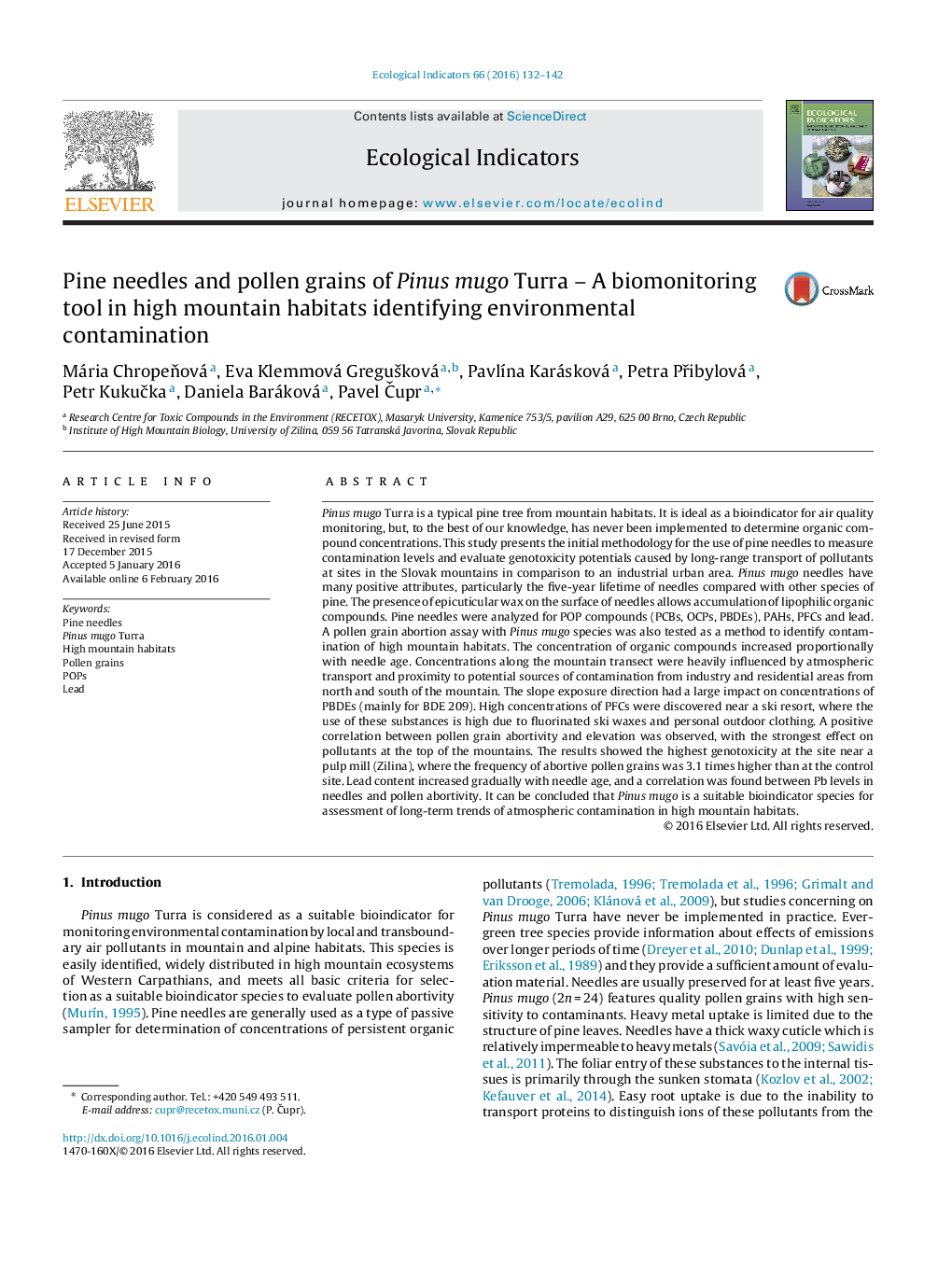| Article ID | Journal | Published Year | Pages | File Type |
|---|---|---|---|---|
| 6293418 | Ecological Indicators | 2016 | 11 Pages |
Abstract
Pinus mugo Turra is a typical pine tree from mountain habitats. It is ideal as a bioindicator for air quality monitoring, but, to the best of our knowledge, has never been implemented to determine organic compound concentrations. This study presents the initial methodology for the use of pine needles to measure contamination levels and evaluate genotoxicity potentials caused by long-range transport of pollutants at sites in the Slovak mountains in comparison to an industrial urban area. Pinus mugo needles have many positive attributes, particularly the five-year lifetime of needles compared with other species of pine. The presence of epicuticular wax on the surface of needles allows accumulation of lipophilic organic compounds. Pine needles were analyzed for POP compounds (PCBs, OCPs, PBDEs), PAHs, PFCs and lead. A pollen grain abortion assay with Pinus mugo species was also tested as a method to identify contamination of high mountain habitats. The concentration of organic compounds increased proportionally with needle age. Concentrations along the mountain transect were heavily influenced by atmospheric transport and proximity to potential sources of contamination from industry and residential areas from north and south of the mountain. The slope exposure direction had a large impact on concentrations of PBDEs (mainly for BDE 209). High concentrations of PFCs were discovered near a ski resort, where the use of these substances is high due to fluorinated ski waxes and personal outdoor clothing. A positive correlation between pollen grain abortivity and elevation was observed, with the strongest effect on pollutants at the top of the mountains. The results showed the highest genotoxicity at the site near a pulp mill (Zilina), where the frequency of abortive pollen grains was 3.1 times higher than at the control site. Lead content increased gradually with needle age, and a correlation was found between Pb levels in needles and pollen abortivity. It can be concluded that Pinus mugo is a suitable bioindicator species for assessment of long-term trends of atmospheric contamination in high mountain habitats.
Keywords
Related Topics
Life Sciences
Agricultural and Biological Sciences
Ecology, Evolution, Behavior and Systematics
Authors
Mária ChropeÅová, Eva Klemmová GreguÅ¡ková, PavlÃna Karásková, Petra PÅibylová, Petr KukuÄka, Daniela Baráková, Pavel Äupr,
